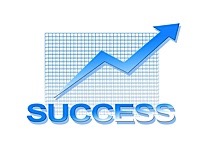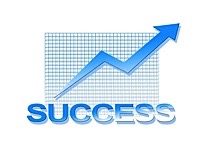 Washington, D.C. (PRESS RELEASE – April 15, 2011) - The Small Business & Entrepreneurship Council (SBE Council) published the “Business Tax Index 2011: Best to Worst State Tax Systems for Entrepreneurship and Small Business.” The index ranks the 50 states and District of Columbia according to the costs of their tax systems for entrepreneurship and small business.
Washington, D.C. (PRESS RELEASE – April 15, 2011) - The Small Business & Entrepreneurship Council (SBE Council) published the “Business Tax Index 2011: Best to Worst State Tax Systems for Entrepreneurship and Small Business.” The index ranks the 50 states and District of Columbia according to the costs of their tax systems for entrepreneurship and small business.
Raymond J. Keating, chief economist for SBE Council and author of the report, said: “Higher taxes have an impact on a state’s competitiveness. There is a reason why low tax states are better able to attract investment, and ‘Business Tax Index 2011′ helps to shed light on the tax burdens that are affecting the decisions of individuals and businesses. In many states, elected officials continue to propose tax increases – and actually raise them – in order to fund out-of-control government spending. High levels of spending translate into increased tax burdens on the entrepreneurs and investors who drive economic growth and job creation.”
innovation DAILY
Here we highlight selected innovation related articles from around the world on a daily basis. These articles related to innovation and funding for innovative companies, and best practices for innovation based economic development.
Would You Play the Startup Lottery?
 A man in Denmark is setting up a lottery that would allow startups to trade 1% of their equity for a user base.
A man in Denmark is setting up a lottery that would allow startups to trade 1% of their equity for a user base.
Startups that participate in the Startuplotto will set a minimum number of sign-ups for which they’re willing to part with their equity. The lottery will introduce one company every month to members of its listerv, who can enter the lottery by signing up for the startup’s service. If enough people sign up, then the equity will be raffled off to one of those new users.
So far, about 2,000 people have signed up for the listserv, but Startuplotto creator Thomas Bro imagines lottery participant limits as high as 750,000 users.
10 Quotes To Examine Your Business By
 Inc Magazine held its Growco conference April 6 -8, 2011. I attended — and the speakers were excellent. So I picked out 10 quotes to make you think harder about your own business and where it’s headed:
Inc Magazine held its Growco conference April 6 -8, 2011. I attended — and the speakers were excellent. So I picked out 10 quotes to make you think harder about your own business and where it’s headed:
- “Instead of being ‘heads down’ we should be ‘heads up’ so we can spot trends” This is according to Josh Linkner, the Founder of ePrize, a venture capitalist, and now bestselling author of Disciplined Dreaming. If you don’t stop and look around you, you miss the big picture – and you can’t look ahead. Are you taking time to look “up” in your day?
- “I have no good ideas. I ‘steal’ them from my staff.” Said by Duane Jebbett, CEO of Rowmark, a plastics maker from Ohio. The point here is NOT about taking credit for your employees’ ideas. It’s actually the opposite — it means to empower your staff to think and solve problems on their own. So, are you encouraging your employees to come up with good ideas? And do you adopt their ideas, or do you ignore them because they are not your own, as if their thinking doesn’t count?
Success From The Ground Up - Business Opportunities Weblog
The next time you need a little inspiration to help you get through a rough patch with your business, consider the success stories of entrepreneurs that began with nearly nothing. San Francisco Chronicle shares a couple of the most popular business stories available today.
Henry Ford
He started Ford Motor Company with just $28,000 – and that was not even Ford’s savings. It was money that he had borrowed from a variety of different investors. Ford made good use of the funds. He applied his talents to Ford Motor Company and became the first person to ever mass produce automobiles. Today, Ford Motor Company is a $56 billion dollar company with over $128 billion dollars in annual revenue.
Some Startups Forget to Validate a Business Model
 Many entrepreneurs work hard on the proof of concept (technical), but skip any proof of the business model (revenue flow). In other words, once they are convinced that the product works, they assume their price, sales channel, and marketing will bring in the customers. These days, the technical side may be the easy part.
Many entrepreneurs work hard on the proof of concept (technical), but skip any proof of the business model (revenue flow). In other words, once they are convinced that the product works, they assume their price, sales channel, and marketing will bring in the customers. These days, the technical side may be the easy part.
Proving the business model requires a different approach than proving the technical concept. For example, one CEO I know gave away his software product to the first ten customers. Customer personnel seemed to like it, and it worked, so he was totally devastated when he couldn’t sell one for a “reasonable” price in the first two months of hard work.
The New, Costly Things : Roll Call Special Features Outlook
 Last year’s 50th anniversary of the invention of the laser was a cause for celebration in the scientific community and sparked a yearlong “Laserfest” commemoration. But it also won some notice in Washington — in part because the laser resulted from research funded by a government grant in the 1950s. Science advocates on Capitol Hill won adoption of a congressional resolution noting the anniversary. President Obama said the laser “brought economic benefits unimagined at the start of the process.”
Last year’s 50th anniversary of the invention of the laser was a cause for celebration in the scientific community and sparked a yearlong “Laserfest” commemoration. But it also won some notice in Washington — in part because the laser resulted from research funded by a government grant in the 1950s. Science advocates on Capitol Hill won adoption of a congressional resolution noting the anniversary. President Obama said the laser “brought economic benefits unimagined at the start of the process.”
Indeed, at first, the invention was only of interest to physicists. It was “a cute thing; every physicist was thrilled by it,” recalls Michigan Republican Vern Ehlers, who earned his doctorate in physics the same year as the invention and pushed the commemorative measure as one of his final acts before retiring after serving 17 years in the House. Today, however, lasers are ubiquitous, found in everyday objects as diverse as DVD players, grocery store price scanners and tattoo-removal equipment.
Bootstrapping: Stretch what little funds you have « The RIC Blog
 Always use some bootstrapping
Always use some bootstrapping
“Bootstrapping is the reality for 98% of start ups”, according to unreformed entrepreneur and former MaRS leader, Charles Plant.
What is bootstrapping, anyway?
Bootstrapping is using your own money and other types of money that are available to build your business.
At our last Entrepreneurship 101 lecture on bootstrapping, Charles discussed creative ways of growing your business without raising money from investors.
As a result of his experience with about a dozen emerging companies, Charles is a strong advocate of the bootstrapping model. To learn more about its pros and cons, watch the lecture video.
Why It’s A Great Time To Be An Entrepreneur - Pretty Young Professional - Smart Content for Smart Women - Forbes
 Have you ever thought about starting your own company? Do you have a great idea that you think could be the next Twitter? Perhaps it’s time you turned your dreams into reality. More and more, young women are not only starting their own businesses, but they are also achieving enormous success doing so. Take recent start-ups like Her Campus, Rent the Runway, and LearnVest: all three lucrative businesses were founded by women in their early twenties.
Have you ever thought about starting your own company? Do you have a great idea that you think could be the next Twitter? Perhaps it’s time you turned your dreams into reality. More and more, young women are not only starting their own businesses, but they are also achieving enormous success doing so. Take recent start-ups like Her Campus, Rent the Runway, and LearnVest: all three lucrative businesses were founded by women in their early twenties.
There are major pros to being an entrepreneur. You’re not tied to another person’s desk, schedule, or priorities. You can do what you love, do it your way, and have as unconventional a life and calendar as you choose. And your future—and earning potential—is wide open when you’re your own boss.
Internet2 Upgrade Will Let Researchers Share Data Faster - Wired Campus - The Chronicle of Higher Education
 A new network under development by Internet2 will give researchers at member colleges and other participating institutions up to 10 times more bandwidth—making it easier and faster to share large data sets.
A new network under development by Internet2 will give researchers at member colleges and other participating institutions up to 10 times more bandwidth—making it easier and faster to share large data sets.
The Internet2 network now allows users to transfer up to 10 gigabits per second. The new network will bring that up to 100 gigabits per second. The key to the speed increase will be capacity, organizers say. That means it will carry more data at any given time than the group’s present backbone network, and that will reduce congestion.
Friend, family loans are startup’s target | Silicon Valley / San Jose Business Journal
 THE BUSINESS: LendFriend Inc. has developed a software platform that helps to create loans between friends and family as well as to manage payments. “We reduce the discomfort of requesting a loan, simplify the process, build borrower’s credit, and protect both the lender’s investments and relationships,” says CEO Geno Moscetti. The company was one of PayPal’s Innovate Top 10 finalists last year and participated in PayPal’s startup accelerator program at Plug and Play Tech Center this year.
THE BUSINESS: LendFriend Inc. has developed a software platform that helps to create loans between friends and family as well as to manage payments. “We reduce the discomfort of requesting a loan, simplify the process, build borrower’s credit, and protect both the lender’s investments and relationships,” says CEO Geno Moscetti. The company was one of PayPal’s Innovate Top 10 finalists last year and participated in PayPal’s startup accelerator program at Plug and Play Tech Center this year.
VC deal size grows in first quarter despite fewer deals made | VentureBeat
 Venture capitalists invested the most in deals worth $50 million or more since the third quarter of 2001, pumping $5.9 billion into 736 deals in the first quarter of 2011, according to a MoneyTree Report released today by PricewaterhouseCoopers and the National Venture Capital Association.
Venture capitalists invested the most in deals worth $50 million or more since the third quarter of 2001, pumping $5.9 billion into 736 deals in the first quarter of 2011, according to a MoneyTree Report released today by PricewaterhouseCoopers and the National Venture Capital Association.
Using data from Thomson Reuters, the study showed a spike of 5 percent in dollars invested and a 54 percent surge in later stage deals over the prior quarter, with almost all sectors showing double-digit gains.
The unwelcome news was that venture capital fell 11 percent in the number of deals made during the same period in 2010, when $5.6 billion was invested in 827 deals.Still, most of the stats are welcome news for an industry that had struggled at times in 2010 to prove it was no longer spooked by the credit crisis and was ready to jump back into the fray.
BlackBerry Tablet, PlayBook, a Notable Debut: Mobile Technology News «
 Research In Motion, the company behind the iconic BlackBerry devices, is finally taking the veil off its much-anticipated tablet, the PlayBook. The device will cost between $500 and $700 and will be available April 19.
Research In Motion, the company behind the iconic BlackBerry devices, is finally taking the veil off its much-anticipated tablet, the PlayBook. The device will cost between $500 and $700 and will be available April 19.
I have been playing around with the device for a couple of days, and I’ve also been comparing it with three tablets currently available to me: the iPad 2, Motorola XOOM and Samsung Galaxy Tab. Like most reviewers, I don’t tend to read the review guides that manufacturers send us with the review units. Out of the box intuitiveness is — or should be — par for the course when it comes to tablets and new smartphones. When I bought the iPad, I didn’t need any outside help to get started. A few exploratory gestures, and I was off to the races. I used the same approach with the PlayBook.
Ten Tax Deductions For Entrepreneurs - Resources - Portfolio.com
 Entrepreneurs are expected to file more than 24 million returns for the 2010 tax year. And one of the payoffs of owning a company is being able to write off numerous business expenses through deductions. Here are 10 you may not know about.
Entrepreneurs are expected to file more than 24 million returns for the 2010 tax year. And one of the payoffs of owning a company is being able to write off numerous business expenses through deductions. Here are 10 you may not know about.
It is estimated that entrepreneurs will file over 24 million tax returns in 2011. One of the beauties of owning a business come tax time is the ability to write off numerous business expenses through deductions.
For those who started a business last year, there's an additional bit of good news. Filers are entitled to a new, higher deduction for startup costs incurred in 2010.
There are also certain types of expenses that small-business owners cannot deduct, including personal expenses, capital expenses (such as business assets and improvements), or the expenses used to figure the cost of goods sold. (Here’s the Internal Revenue Service’s explanation of the latter.)
Venture capital funding plunges in Michigan | Detroit Free Press | freep.com
 Venture capital investment in Michigan companies from January through March plunged to its lowest quarterly level in seven years, according to a new report released today.
Venture capital investment in Michigan companies from January through March plunged to its lowest quarterly level in seven years, according to a new report released today.
Only $3.1 million went to six companies in the state in this year's first quarter, compared with $14.2 million in four deals in the year-ago period.
The new figures are from the MoneyTree Report from PricewaterhouseCoopers and the National Venture Capital Association.
Ronald Reed, chairman of the Michigan Venture Capital Association and managing director of Birmingham-based Seneca Partners, said there were no unusual factors that caused the drop in investment dollars.
Oregon venture capital activity held steady in first quarter | OregonLive.com
 Venture capital dollars continued flowing into Oregon during the first part of the year, according to new data out this morning from the National Venture Capital Association.
Venture capital dollars continued flowing into Oregon during the first part of the year, according to new data out this morning from the National Venture Capital Association.
Although Oregon's haul remains small by national standards, and hasn't increased significantly from last year, it provides a grounding for future entrepreneurial activity in the state.
Oregon startups attracted $41.4 million in the first quarter, compared with $45.2 million invested during the same period last year. It's a little above the $39.2 million the state landed in the fourth quarter.
Nationally, VC investment was up 5 percent from the fourth quarter.
More than half of Oregon's total, $22.0 million, went to a single company -- Tigard-based Agilyx Corp., a waste-reduction and clean energy company that won backing from prominent Silicon Valley venture firm Kleiner Perkins Caufield & Byers.
Infographic Of The Day: If You Sell Your House, Will You Get A Good Price? | Co.Design
 Our economy is slowly getting back on its feet, but the real estate market remains weak. But how weak is it, exactly, where you live? If you're selling a home, how likely is it you'll have to cut your offer price? And will you have to do it more than once?
Our economy is slowly getting back on its feet, but the real estate market remains weak. But how weak is it, exactly, where you live? If you're selling a home, how likely is it you'll have to cut your offer price? And will you have to do it more than once?
Those are difficult questions, which were basically impossible to answer until today, when the launch of a remarkable interactive map created by Trulia, a real-estate listings website, makes them much easier to answer.
2011 TechStars NYC Startups
 This morning, we sat among 750 VCs and entrepreneurs and watched eleven promising startups present.
This morning, we sat among 750 VCs and entrepreneurs and watched eleven promising startups present.
Each was selected from a pool of 600 applicants, making Techstars NYC harder to get into than Harvard or Yale.
Each startup was excellent, and we're sure you'll hear more from them in the future. Some, like Immersive and Nestio, stood out above the rest.
These People Sold Twitter For Just $5 Million Back In 2006
 How would you feel if a company you sold for $5 million less than five years ago was now reportedly fetching offers as high as $10 billion?
How would you feel if a company you sold for $5 million less than five years ago was now reportedly fetching offers as high as $10 billion?
That's almost exactly what's happening to the dozen or so original owners of Twitter.
The Curse of the Innovator
 Recently we've been discussing at many organizations what it takes to get innovation done in large businesses with embedded behavior and practices. One side of the coin is obviously the impact of Disruptive Technology, but the other is purely the issue of Innovation Management or creating an organization that embraces or assists innovation.
Recently we've been discussing at many organizations what it takes to get innovation done in large businesses with embedded behavior and practices. One side of the coin is obviously the impact of Disruptive Technology, but the other is purely the issue of Innovation Management or creating an organization that embraces or assists innovation.
In a recent workshop I was conducting in Amsterdam, John Chaplin (Ixaris) related a session he had with a bunch of senior banking executives tackling the problem of creating innovation within large organizations. The bankers were asked what the issues with 'innovators' were. More often than not it was sighted that strong innovators clashed with the organization culture and so eventually they were fired because they were too good at their job.
Let Your Story Cut Through the Noise and Clutter
 “The universe is made of stories, not of atoms” ~ Muriel Rukeyser
“The universe is made of stories, not of atoms” ~ Muriel Rukeyser
On January 5, 2007, I was sitting out on my lanai looking out at the lake and golf course in Ft. Myers, Florida. I was officially and unexpectedly in between careers and jobs, living in a town where I literally knew one person. I had made a voluntary career transition in August 2006 and decided to embark on yet another adventure in my life–one that did not turn out the way I had anticipated.
I was stunned, uncertain and yet strangely excited. The question came into my head, “What do you really want to do, not what do you have to do?” I really wanted to start my own company using all of my gifts, talents, passion and expertise to help others and do what I do best: teach, guide and train. On February 4, 2007, I launched Train with Shane. I just celebrated 4 years in business.


